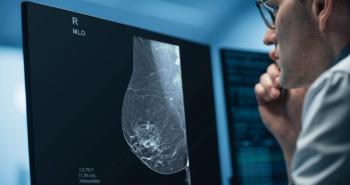
Hospitals Have Higher Mammography Recall Rates
Mammography recall rates may be influenced by factors outside of radiologists’ control, and rates might not be a great measure of quality.
Mammography recall rates as a measure for quality may have limitations, suggests a study published in the journal
Researchers from the Rhode Island Hospital and Alpert School of Medicine in Providence undertook a study to understand the factors that influence mammography recall rates, which are used by the federal government as a quality indicator. However, hospitals and community office practices see different patient populations, which could affect the number of recalls.
The researchers reviewed data from 74,297 screening mammograms performed between May 2008 and September 2011 that were read by five radiologists with expertise in breast imaging. The radiologists interpreted mammograms at a community office practice and an academic referral hospital. Both sites used full-field digital mammography and batch screening interpretation.
A total of 5,799 patients were recalled for an overall recall rate of 7.8 percent. The hospital recall rate was 8.6 percent, while the community practice recall rate was significantly lower at 6.9 percent.
However, “For every radiologist, the recall rate was significantly lower in community practice than in the hospital setting,” study co-author Ana Lourenco, MD, said in a release. Lourenco is a radiologist at the hospital.
Comparing the patients from the hospital and the community practice, the researchers found that significantly more of the hospital patients had undergone previous surgeries (slightly more than 13 percent) than the patients in the community practice (5.6 percent). Hospital patients also had more biopsies (7 percent) than the community practice patients (1.4 percent). Another difference was patient age. Hospital patients were a mean of 56 years old, while the community practice patients were a mean of 63 years old.
These factors could play into if a patient needs to be seen again, researchers said.
“These [hospital] patients may have more complicated mammograms to interpret or may be at higher risk for cancer than patients at the community site,” Lourenco said. Younger patients do tend to have higher recall rates, as well, she noted.
The authors concluded that these differences highlight the limitations of using recall rates as a quality measure for breast cancer screening.
Newsletter
Stay at the forefront of radiology with the Diagnostic Imaging newsletter, delivering the latest news, clinical insights, and imaging advancements for today’s radiologists.




























